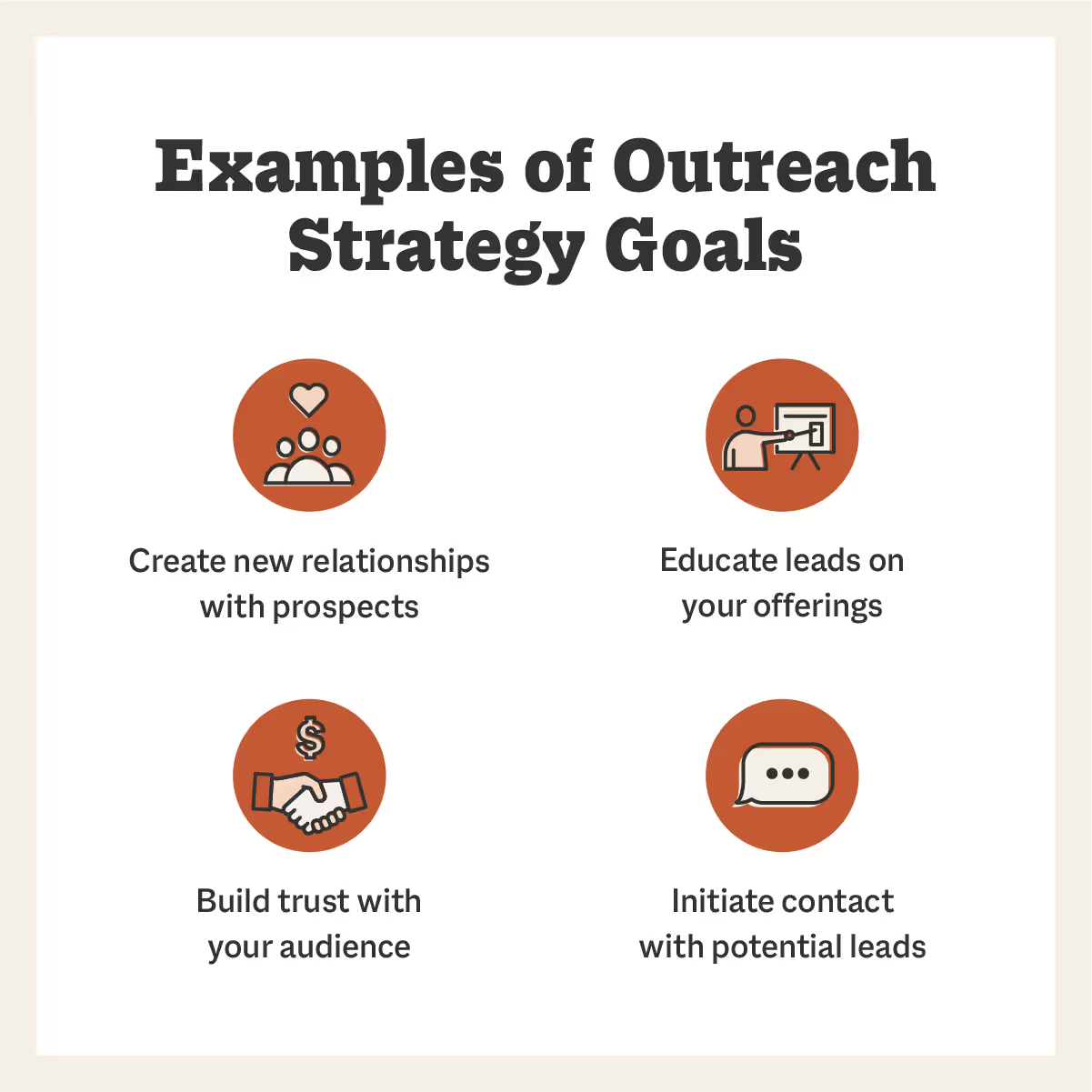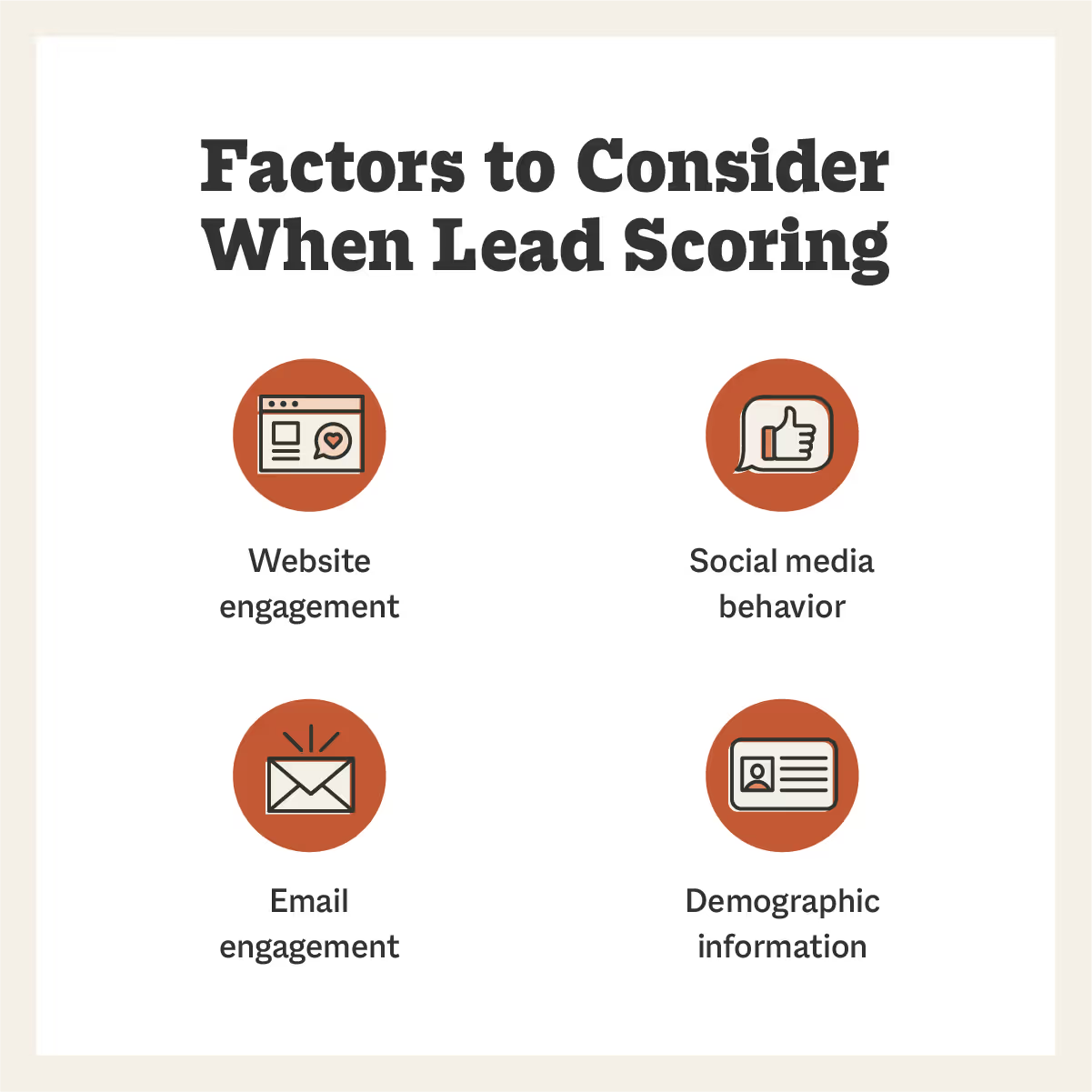10 Steps to Create a Successful Outreach Strategy
10 Steps to Create a Successful Outreach Strategy

Companies frequently think that the more prospects they have, the better; nevertheless, pursuing the wrong kinds of prospects wastes time, money, and other valuable resources. Because of this, a solid outreach strategy is very essential to both the short-term and long-term success of your business.
At Smith.ai, our live agents are experts in outreach campaigns, so we’ve created a step-by-step guide to create the ultimate outreach strategy that will help you connect with your prospects, keep them interested and engaged, and dramatically increase your sales.
What is an outreach strategy?
An outreach strategy is a specific set of tactics used to attract new clients or customers. How you structure your outreach strategy will be based on your business needs, the type of products or services you offer, and the market you intend to target.
With that being said, there’s no one-size-fits-all approach to creating an effective outreach strategy. Your strategy depends on your outreach goals, whether it be initiating new relationships with clients, informing leads on your offerings, or simply making contact with potential customers for the first time.
Interesting outreach statistics
- 57% of C-level and VP buyers prefer to be contacted by phone.
- 82% of buyers research providers on LinkedIn before responding to outreach attempts.
- 80% of buyers prefer cold emails to cold calls.
- 62% of buyers want to hear from sellers when they're actively seeking a solution to a problem.
- Over 40% of sales professionals said that the phone is the most effective sales tool at their disposal.
- 51% of businesses communicate with clients over at least eight channels.
- 82% of consumers seek referrals from others before making a purchase.
- Personalized subject lines boost response rate by 30.5%.
How to create a strategic outreach plan
Here is a step-by-step tutorial on how to develop an effective B2B outreach strategy that will enable you to connect with your prospects, maintain their interest, and increase your sales. While these strategies are excellent for B2B, most of these techniques also apply to B2C companies.
Step 1: Outline your outreach goals
The first step to any effective outreach strategy is to outline your outreach goals. Like we mentioned before, your outreach strategy will all depend on what you want out of your outreach efforts. This could be:
- Nurturing leads
- Educating leads on your offerings
- Building trust with your audience
- Making first-time contact with potential leads

Whatever your goals are, document them, being very specific as to how you plan to achieve each. According to a study done by Dr. Gail Matthews, a psychology professor at Dominican University of California, sharing weekly progress reports and writing action pledges increases your chances of success by 76%.
Not only that, but you can refer to them later down the line and evaluate if you need to alter your outreach plan to achieve those objectives.
Step 2: Align with your marketing team
Although sales and marketing are separate departments, they work closely together when it comes to outreach. This point of agreement makes sound sales and marketing alignment a critical part of an effective outreach strategy.
For starters, analytics are essential to effective marketing campaigns so your sales team can acquire information needed to choose the channels they’ll employ for outreach.
Let’s say your sales team originally intended to make cold calls for outreach, but the marketing analytics data reveals that emails with calls to action are the best at generating conversions. Your sales team can adjust their strategy accordingly.
Additionally, the marketing team can assist with creating outreach messages that remain consistent across all communication channels. This will ensure your sales team remains on-brand and has your company’s tone and style in every email, call script, and social media message.
Step 3: Create an ideal customer profile (ICP)
The next step in creating a strategic outreach plan is to create an ideal customer profile (ICP). An ICP is a detailed description of your ideal customers which will help you determine who you should be reaching out to.
A great place to start is mapping out the demographics your company would sell to.

Once you’ve mapped out what your ideal customer would look like, you can move on to the next step.
Step 4: Build a prospect list
A prospect list consists of businesses and contacts that fit your ideal customer profile. However, it goes deeper than just a prospect’s contact information. A good prospect list enables you to connect with people most inclined to buy and effectively prepare your sales pitches by incorporating up to date data on each prospect.
For starters, even if the prospect perfectly fits your ideal customer profile, if they lack the means to purchase your product or service, it may not be worth your time to pursue them. Your time would be better spent contacting someone who is ready to make a purchase.
Regarding pitching, the more information you have in your prospect list, the simpler it will be for your sales team to customize a pitch for that specific client, increasing the likelihood that they'll be interested.
Step 5: Start scoring leads
Now that you have your ICP and a prospect list, you’ll most likely have a lot of potential prospects you could reach out to. However, the key to an effective outreach strategy is to focus on bringing in the right clients instead of the most clients.
That’s where lead scoring comes in –– a process that helps you determine which leads are the most valuable to pursue and which are most likely a waste of time.
You can determine appropriate scores by observing a lead’s:
- Website behavior
- Social media engagement
- Email engagement
- Demographics (especially for cold leads that you have no previous experience or interaction with)

After calculating the scores, create a targeted outreach plan that starts with the buyers who received the highest scores.
Step 6: Choose the most effective outreach channel
Whether it’s email, social media, or a classic phone call, study your sales leads to determine which outreach channels they use and engage with the most. For example, if you find that a potential client is highly active on LinkedIn, you should make an effort to get in touch with them there.
You may also notice a potential client opens your company’s emails. That’s a good indicator that their inbox is active and that they engage with your emails, so email outreach is a great way to initiate first contact.
Depending on the prospect's preferences, the information you have at hand, and the specifics of the transaction, you may choose a different outreach channel at any given time.
With all that being said, the overall best method is a multichannel outreach strategy which uses multiple outreach tools including phone, email, live chat, and social media. In fact, over half of businesses use at least eight different channels to communicate with their prospects and find success.
By doing so, you can pique a lead's interest through the channel they prefer and work your way up to setting up a phone call or a sales appointment.
Step 7: Personalize your messages
In sales, building trust over a short period of time is the norm. Prospects who aren't sold on you are unlikely to become clients, and one of the simplest ways to scuttle a possible business deal is to come off as indifferent or impersonal.
Because of this, a thoughtful, personalized message can be a valuable tool in advancing a transaction. If you can give prospects that sense of being seen, heard, and understood through your messaging, you can establish the trust necessary to forge a personal connection and relationship.
While performing outreach, make sure you include the prospect’s name, company, and any other pertinent information you have about them that shows you did your research and have the solution to the problems they may be facing.
If it seems appropriate, don't be afraid to include something lighthearted or informal, like an emoji or GIF. This makes you appear more personable, less generic, and memorable from the flood of other outreach emails they most likely receive on a daily basis.
Step 8: Send follow-ups
Let's say you had a successful conversation with a potential customer. Now you need to follow up with them as soon as possible to make sure that lead doesn’t slip through the cracks.
Send a follow-up message through email or text with a recap of your conversation and additional touchpoints to increase engagement and keep your conversation top of mind.
Step 9: Record all information in your CRM
The success of your outreach plan depends on the documentation of your outreach efforts in your preferred customer relationship management (CRM) system.
By keeping all of your prospects' information in one place, you can easily pick up where you left off in your sales process without having to dig for information. CRM integration is key to keeping your outreach strategy organized and effective.
Step 10: Utilize automation
While all of these steps will help you create a successful outreach strategy, a bonus tactic to help you get high-impact results is utilizing technology like automation.
The correct automation solutions can boost productivity and save critical time by eliminating the unnecessary footwork involved in the more repetitive, rote processes related to sales outreach.
Depending on your specific business needs, there are a variety of paths you can take, but you should at the very least investigate common tools that assist with tasks like automating emails or scheduling meeting reminders as well as pipeline analytics tools that show how leads react to what you send them.
Put your outreach strategy into action
What is the outcome of this initial outreach strategy investment? Efficient outreach that pays attention to the needs of your different buyers. Your prospects will respond more frequently and your communications will have a greater impact. Use this infographic below to help you structure your outreach strategy.

Let Smith.ai handle your outreach strategy
As you can tell, outreach is no easy feat and requires a lot of time and resources, so allow our Smith.ai virtual receptionists to handle your outreach campaigns. We make calls for your business and follow custom AI-driven workflows to maximize outcomes.
With Smith.ai you can keep your staff focused on their work while we serve as your outreach team. Book a free consultation to learn more about how our live agents can help your business grow and thrive.
Sources: RAIN Group | LinkedIn | Sales Insights Lab | ZoomInfo | Pressfarm | Backlinko | Inc
Take the faster path to growth. Get Smith.ai today.
Key Areas to Explore
Technical Implementation Terms
Voice user interface (VUl) design
Speech recognition integration
Text-to-speech optimization
API connectivity and webhooks
Real-time data synchronization

Your submission has been received!














.svg)



